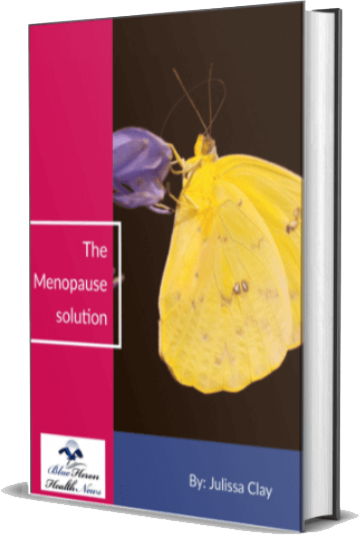
The Menopause Solution By Julissa Clay – Blue Heron Health News The Menopause Solution it can be concluded easily that you should try this program at least once if menopause is destroying your internal organs or deteriorating your physical health to a considerable level. This program can help in resolving your health issues caused by perimenopause and menopause in a completely natural manner. You can use this program without any risk as you can get your money back if you are not satisfied with its results.
How can one prevent injuries related to menopause symptoms?
Menopause can bring physical changes that increase the risk of injuries, particularly related to bone health, joint stiffness, muscle loss, and balance issues. Preventing injuries during menopause involves managing these symptoms and adopting strategies to protect bone and muscle health, improve balance, and maintain physical strength. Here are some key ways to prevent injuries related to menopause symptoms:
1. Maintain Bone Health
- Calcium and Vitamin D Intake:
- Menopause leads to a decrease in estrogen levels, which can weaken bones and increase the risk of osteoporosis and fractures. Ensure an adequate intake of calcium and vitamin D to support bone strength.
- Sources of Calcium: Dairy products, leafy greens, and fortified foods.
- Sources of Vitamin D: Sun exposure, fortified foods, and supplements (as recommended by a healthcare provider).
- Bone Density Testing: Regular bone density scans (DEXA scans) can help monitor bone health and detect early signs of osteoporosis. Early detection allows for preventative measures to be taken, such as dietary adjustments or medications.
- Medications for Bone Health: If diagnosed with osteoporosis or osteopenia, your healthcare provider may recommend medications like bisphosphonates or hormone replacement therapy (HRT) to maintain bone density and reduce fracture risk.
2. Engage in Weight-Bearing and Strengthening Exercises
- Weight-Bearing Exercises: Engage in weight-bearing exercises, such as walking, jogging, hiking, or dancing. These activities help strengthen bones and prevent bone loss associated with menopause.
- Strength Training: Incorporate strength training exercises like resistance bands, bodyweight exercises, or free weights to build muscle mass, which helps protect bones and joints. Stronger muscles support joint health, improve balance, and reduce the risk of falls and fractures.
- Yoga and Pilates: These activities promote flexibility, balance, and core strength, reducing the risk of injuries from falls and improving joint function. Yoga, in particular, can help alleviate joint stiffness, a common symptom of menopause.
3. Improve Balance and Coordination
- Balance Exercises: Incorporate balance exercises, such as standing on one leg, tai chi, or specific balance training routines. These exercises improve stability and reduce the risk of falls, which are more common during menopause due to changes in muscle strength and joint function.
- Core Strengthening: A strong core supports better balance and coordination. Exercises like planks, bridges, and abdominal strengthening can help improve core strength, enhancing overall stability.
- Footwear and Orthotics: Wear supportive shoes with good arch support to maintain balance and reduce the risk of slips, trips, and falls. Proper footwear can also alleviate joint pain, especially in the knees and hips.
4. Manage Joint Pain and Stiffness
- Regular Physical Activity: Engaging in regular physical activity can reduce joint stiffness and improve mobility. Low-impact exercises like swimming, cycling, or water aerobics are gentle on the joints while promoting flexibility and range of motion.
- Stretching: Incorporate daily stretching exercises to improve joint flexibility and reduce stiffness. Focus on stretching the major muscle groups, such as the hamstrings, calves, shoulders, and back.
- Ergonomics: Use ergonomic tools and modify your workspace or home environment to reduce strain on the joints. Ergonomic chairs, supportive pillows, and wrist supports can prevent injury during daily activities and reduce joint pain.
5. Maintain a Healthy Weight
- Weight Management: Gaining weight during menopause can increase pressure on the joints, particularly in the knees and hips, raising the risk of injury. Maintaining a healthy weight through diet and exercise helps reduce joint stress and prevents injuries associated with joint pain.
- Balanced Diet: Eating a diet rich in whole foods, fruits, vegetables, lean proteins, and healthy fats supports overall health, including joint and bone health. A balanced diet can also help manage weight and prevent obesity-related injuries.
6. Avoid High-Risk Activities and Modify Movements
- Avoid High-Impact Exercises: While exercise is important, avoid high-impact activities that can strain the joints or increase the risk of falls, such as intense running or jumping exercises, especially if you’re experiencing joint pain or osteoporosis.
- Modify Movements: Modify how you perform certain activities to reduce the risk of injury. For example, bend your knees and use your legs rather than your back when lifting heavy objects, and use handrails for support when going up and down stairs.
- Use Assistive Devices: If needed, use assistive devices like walking sticks, canes, or handrails for additional stability and support. These devices can help you stay active while preventing falls and joint strain.
7. Address Menopause-Related Fatigue
- Get Enough Sleep: Menopausal women often experience sleep disturbances due to night sweats and hot flashes, leading to fatigue, which can increase the risk of accidents or injuries. Establishing a regular sleep routine, practicing good sleep hygiene, and using cooling devices can improve sleep quality.
- Rest and Recovery: Ensure you get enough rest between physical activities to avoid overexertion and muscle fatigue. Fatigue increases the likelihood of injury, especially when performing exercises or daily tasks.
8. Stay Hydrated
- Hydration: Dehydration can lead to muscle cramps, dizziness, and fatigue, increasing the risk of injury. Drink plenty of water throughout the day, especially when exercising, to maintain optimal muscle function and joint lubrication.
9. Manage Hot Flashes
- Cooling Strategies: Hot flashes can sometimes cause sudden discomfort or dizziness, increasing the risk of falls. Managing hot flashes with cooling strategies (e.g., using fans, wearing light clothing, and staying hydrated) can help reduce this risk.
- Hormone Replacement Therapy (HRT): For some women, hormone replacement therapy can help alleviate hot flashes and other menopause symptoms, making it easier to stay active without the discomfort of overheating.
10. Consult Healthcare Providers for Personalized Care
- Regular Checkups: Consult your healthcare provider regularly to monitor bone density, joint health, and overall wellness during menopause. Your doctor can recommend specific interventions, such as medications or physical therapy, to address individual risk factors for injury.
- Physical Therapy: If joint pain, stiffness, or muscle weakness becomes a significant concern, physical therapy can provide tailored exercises to improve mobility, strength, and flexibility, helping to prevent injury.
Summary of Prevention Strategies:
- Strengthen bones with calcium, vitamin D, weight-bearing exercises, and medications if necessary.
- Build muscle mass and improve joint function with strength training, yoga, and regular physical activity.
- Improve balance with balance exercises, proper footwear, and core strengthening.
- Maintain a healthy weight to reduce pressure on joints and avoid injuries.
- Use ergonomic tools and modify movements to prevent joint strain.
- Stay hydrated to support joint and muscle function.
- Manage fatigue and sleep disturbances to avoid accidents caused by tiredness.
- Prevent hot flashes and overheating with cooling strategies or medical treatments.
By adopting these practices, women can reduce the risk of injuries related to menopause symptoms, improving overall well-being and quality of life during this phase of life.

The Menopause Solution™ So if you do not want to be ill-treated by the symptoms of your menopause then you must try it once. It will surely work for you. its price has been reduced only for a limited period. So you should place your order on the official website to avail of this benefit and make your life happier again.